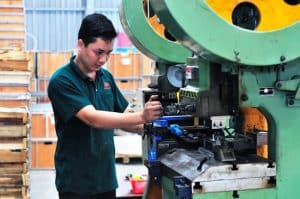Indoor Air Quality: The Silent Health Crisis in Modern Homes
In today’s world, we often think of our homes as a safe haven from the outside world. However, what we fail to realize is that the air inside our homes can be just as polluted as the air outside, or even worse. This silent health crisis in modern homes is known as indoor air quality, and it is a growing concern for many people. In this article, we will explore the dangers of poor indoor air quality and how it can impact our health. We will also discuss what can be done to improve the air we breathe in our homes, ultimately creating a healthier living environment for ourselves and our loved ones.
The Importance of Indoor Air Quality
Many of us spend the majority of our time indoors, whether it be at home, work, or school. Indoor air quality refers to the quality of the air inside buildings and structures, and it plays a critical role in our overall health and wellbeing. According to the Environmental Protection Agency, indoor air can be more polluted than outdoor air, and we spend about 90% of our time indoors. This means that the air we breathe in our homes can significantly impact our health.
The Dangers of Poor Indoor Air Quality
Poor indoor air quality can have a wide range of negative effects on our health. One of the most common symptoms of exposure to polluted indoor air is respiratory issues. This can include coughing, wheezing, and shortness of breath. It can also aggravate existing respiratory conditions such as asthma and allergies. Other health issues that have been linked to poor indoor air quality include headaches, fatigue, and even heart disease.
In homes with poor ventilation, the air can become stagnant, leading to the buildup of pollutants and toxins. These can come from a variety of sources, including household cleaners, smoke, building materials, and even our own bodies. As we go about our daily activities, we release chemicals and pollutants into the air that can get trapped inside our homes if proper ventilation is not in place.
The Impact on Children and the Elderly
Children and the elderly are particularly vulnerable to the effects of poor indoor air quality. Their immune systems may not be as strong, making them more susceptible to respiratory illnesses. Children also tend to spend more time playing on the floor, putting them in close contact with pollutants that have settled on carpets and other surfaces. Additionally, the elderly may already have existing respiratory conditions that can be worsened by exposure to polluted indoor air.
Improving Indoor Air Quality
Fortunately, there are steps we can take to improve the air quality in our homes. The first step is to ensure proper ventilation. This can be achieved by keeping windows open for a period of time each day, using exhaust fans in areas prone to moisture, and investing in an air purifier.
Eliminating sources of pollution is another crucial step in improving indoor air quality. This can include using natural cleaning products, avoiding smoking indoors, and regularly changing air filters in heating and cooling systems. It’s also essential to maintain a clean and clutter-free home to prevent the buildup of dust and other pollutants.
The Benefits of Good Indoor Air Quality
By improving our indoor air quality, we can reap a multitude of benefits. First and foremost, we can protect our health and wellbeing. By reducing exposure to pollutants and toxins, we can decrease the risk of respiratory illnesses and other health issues. Good indoor air quality can also lead to increased productivity and better quality of life.
In addition, by using natural cleaning products and reducing our carbon footprint, we can also help the environment. This not only benefits our health but the health of the planet as well.
In Conclusion
Indoor air quality is a silent health crisis in modern homes that we cannot afford to ignore. By understanding the dangers of poor indoor air quality, we can take the necessary steps to improve the air we breathe. Through proper ventilation, eliminating sources of pollution, and maintaining a clean and clutter-free home, we can create a healthier living environment for ourselves and future generations.
Remember, our homes should be a safe haven, not a source of indoor air pollution. Let’s take action now to protect our health and the health of those we love.









